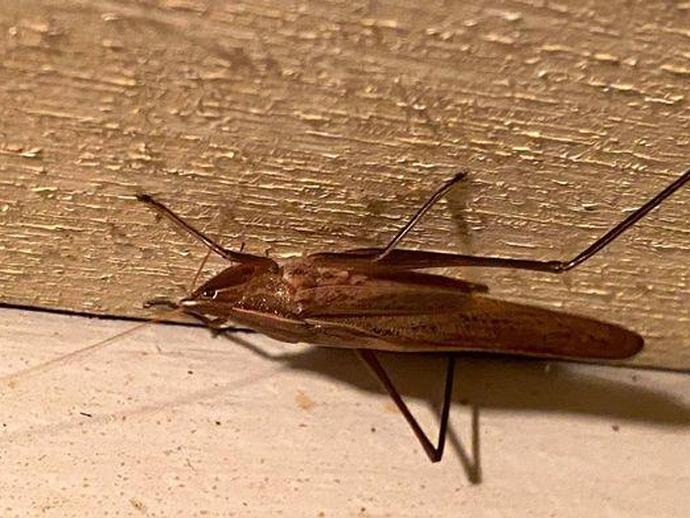September 27, 2021
Ben here with today's edition of #BenInNature presented by our friends at Carter Bank & Trust!
Here's something a bit unusual, or at least something I don't recall ever seeing before: a brown katydid!
This species is Neoconocephalus triops, also known as the broad-tipped conehead (unlike the more famous coneheads, it does not come from France). It can be found in the southeastern U.S. and at the southern extent of its range it stretches west all the way to California.
Coneheaded katydids have an interesting defense mechanism: when startled, they will fly away and often dive towards the ground, at which point they'll stick their head into the dirt, which makes the rest of their body resemble a blade of grass!
What's most interesting about this particular katydid is its brown coloration, which is something I don't recall seeing in a katydid before. After doing some research, I learned that all of the katydids of this species are green when they first emerge from the egg, and many of them remain green for the rest of their lives. Some, however, turn brown after they molt for the final time.
In the summer population of these katydids, only about 20 percent of males and females are brown while the rest are green. However, the second population of the season that overwinters (which this katydid is almost certainly a member of) have much higher percentages of brown katydids: 30 percent of females, and a whopping 95 percent of males are brown! It's hard to tell if this particular katydid is a male or a female based on the photo since the wings tend to cover the ovipositor in this species (which only females have), but statistically speaking, this is probably a male getting ready to hunker down through the cold winter months.
ABOUT #BenInNature
Social distancing can be difficult, but it presents a great opportunity to become reacquainted with nature. In this series of posts, Administrator of Science Ben Williams ventures outdoors to record a snapshot of the unique sights that can be found in the natural world. New updates are posted Monday - Friday, with previous posts highlighted on the weekends. This series of posts is made possible thanks to the support of VMNH Corporate Partner Carter Bank & Trust (www.cbtcares.com).
NATURE PHOTO IDENTIFICATIONS
If you discover something in nature that you would like help identifying, be sure to message us right here on Facebook with a picture (please include location and date of picture) and we'll have our experts help you identify it!

 Hours & Admissions
Hours & Admissions Directions
Directions

